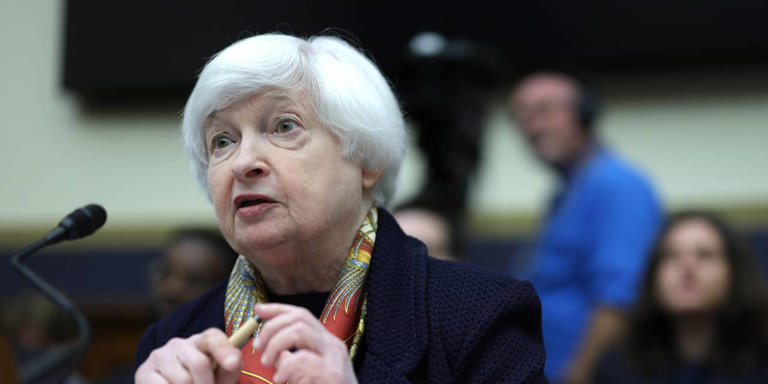The recent publication of a white paper has triggered substantial debate on Wall Street and within political circles in Washington. The document, authored by Stephen Miran and Nouriel Roubini, accuses the U.S. Treasury Department of engaging in what they term “activist Treasury issuance”—a strategy that allegedly manipulates the economy for political ends while risking a resurgence of inflation.
Core Assertions of the White Paper
The white paper’s central claim is that the Treasury’s strategy of heavily financing the U.S. national debt with short-term Treasury bills is a deliberate form of economic manipulation. Miran and Roubini argue that this approach is effectively substituting for traditional monetary policy tools, such as those employed by the Federal Reserve (Fed). They have coined the term “activist Treasury issuance” to describe what they perceive as the Treasury’s intervention in financial markets.
According to the authors, the Treasury’s increased reliance on short-term bills has had an effect similar to approximately $800 billion in quantitative easing. This comparison is based on the paper’s calculation that the Treasury’s actions have the same impact as reducing the yield on the 10-year Treasury note by 25 basis points, or lowering the federal funds rate by a full percentage point. By issuing a larger volume of short-term debt, the Treasury is purportedly reducing long-term interest rates, thereby counteracting the Fed’s efforts to tighten monetary policy and cool down the economy.
Political and Financial Reactions
The paper has not only captured the attention of financial markets but has also sparked political controversy. Senator Bill Hagerty, a Republican from Tennessee, echoed the paper’s concerns during a recent Senate Banking Committee hearing. Hagerty accused Treasury Secretary Janet Yellen of using debt issuance as a tool to boost the economy ahead of elections, alleging that this strategy undermines public confidence in U.S. debt and poses risks to future fiscal stability.
In response, Treasury officials have strongly contested these claims. Treasury Secretary Yellen and her team have firmly denied any intentional manipulation of economic conditions. They argue that the white paper misrepresents the Treasury’s actions and the guidance from the Treasury Borrowing Advisory Committee (TBAC). According to a Treasury spokesperson, the increased issuance of short-term bills was not as extreme as suggested and was influenced by various practical considerations, including seasonal tax payments.
Market Impact and Expert Opinions
The debate over the Treasury’s issuance strategy has influenced market sentiment and drawn comments from various financial experts. Bob Elliott, the CEO of Unlimited and former chief of foreign-exchange policy at hedge fund Bridgewater Associates, raised concerns about the implications of the elevated share of short-term bills. Elliott argued that this could be seen as an unwarranted easing of financial conditions at a time when the economy does not require additional stimulus.
On the other hand, Lou Crandall, chief economist at Wrightson ICAP, rejected the white paper’s conclusions, asserting that the Treasury’s actions are consistent with its historical behavior and recent guidance. Crandall emphasized that the Treasury’s debt issuance patterns align with its stated policies and that the white paper’s claims about manipulation are unfounded.
Historical Context and Future Outlook
The controversy over Treasury debt issuance became prominent following the department’s quarterly refunding announcement for the fourth quarter of 2023. This announcement came after a period of heightened bond yields and market volatility. In response to concerns about the market’s capacity to absorb debt, the Treasury announced plans to issue fewer notes and bonds than anticipated. Although the reduction was relatively modest, it appeared to calm market fears.
However, the white paper suggests that the Treasury’s issuance strategy has broader implications for financial conditions. Guy LeBas, chief fixed-income strategist at Janney Montgomery Scott, highlighted the complexity of the issue, noting that the relationship between debt issuance, financial conditions, and monetary policy is multifaceted. He suggested that simplistic explanations for the effects of Treasury issuance on financial conditions are unlikely to capture the full picture.
Looking forward, the Treasury is set to release its next quarterly refunding announcement on Wednesday morning, detailing its borrowing needs for the fourth quarter. The Treasury has indicated a need to borrow $565 billion in net marketable debt. Additionally, the Federal Reserve is scheduled to announce its latest interest rate decision later in the day, with Chairman Jerome Powell expected to address the press. These developments will provide further insight into the Treasury’s strategies and their implications for monetary policy and economic stability.
In summary, the white paper’s allegations of “activist Treasury issuance” have ignited a significant debate about the Treasury’s role in managing the economy and its potential impact on financial markets. As this discussion evolves, the Treasury’s practices and their broader implications for economic policy will continue to be closely scrutinized.
